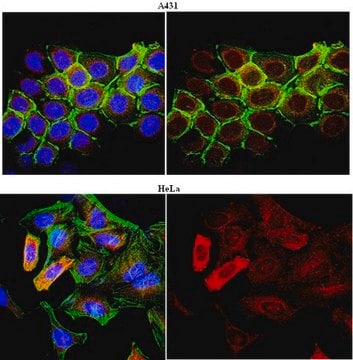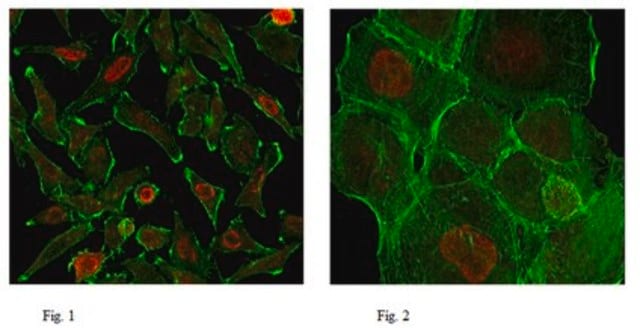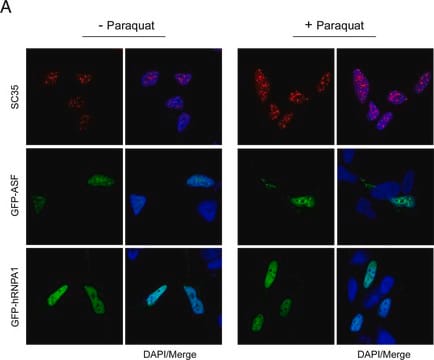04-1572-I
Anti-RNA polymerase II subunit B1 (phospho-CTD Ser-5) Antibody, clone 3E8
culture supernatant, clone 3E8, from rat
Sinônimo(s):
DNA-directed RNA polymerase II subunit RPB1, RNA polymerase II subunit B1, DNA-directed RNA polymerase II subunit A, DNA-directed RNA polymerase III largest subunit, RNA-directed RNA polymerase II subunit RPB1
About This Item
Produtos recomendados
fonte biológica
rat
Nível de qualidade
forma do anticorpo
culture supernatant
tipo de produto de anticorpo
primary antibodies
clone
3E8, monoclonal
reatividade de espécies
mouse
reatividade da espécie (prevista por homologia)
human (immunogen homology)
técnica(s)
ChIP: suitable
ELISA: suitable
western blot: suitable
Isotipo
IgG2aκ
nº de adesão NCBI
nº de adesão UniProt
Condições de expedição
dry ice
modificação pós-traducional do alvo
phosphorylation (pSer5)
Informações sobre genes
human ... POLR2B(5431)
Descrição geral
Especificidade
Imunogênio
Aplicação
ELISA Analysis: A representative lot was used by an independent laboratory to detect RNA polymerase II subunit B1 (phospho-CTD Ser-5) in ChIP (Chapman, R., et al. (2007). Science. 318(5857):1780 -1782.).
Epigenetics & Nuclear Function
Transcription Factors
Qualidade
Western Blot Analysis: A 1:2,000 dilution from a representative lot detected RNA polymerase II subunit B1 (phospho-CTD Ser-5) in 10 µg of untreated and lambda phosphotase treated NIH/3T3 cell lysates.
Descrição-alvo
Ligação
forma física
Armazenamento e estabilidade
Handling Recommendations: Upon receipt and prior to removing the cap, centrifuge the vial and gently mix the solution. Aliquot into microcentrifuge tubes and store at -20°C. Avoid repeated freeze/thaw cycles, which may damage IgG and affect product performance.
Nota de análise
Untreated and lambda phosphotase treated NIH/3T3 cell lysates
Exoneração de responsabilidade
Not finding the right product?
Try our Ferramenta de seleção de produtos.
Código de classe de armazenamento
10 - Combustible liquids
Classe de risco de água (WGK)
WGK 1
Certificados de análise (COA)
Busque Certificados de análise (COA) digitando o Número do Lote do produto. Os números de lote e remessa podem ser encontrados no rótulo de um produto após a palavra “Lot” ou “Batch”.
Já possui este produto?
Encontre a documentação dos produtos que você adquiriu recentemente na biblioteca de documentos.
Nossa equipe de cientistas tem experiência em todas as áreas de pesquisa, incluindo Life Sciences, ciência de materiais, síntese química, cromatografia, química analítica e muitas outras.
Entre em contato com a assistência técnica








